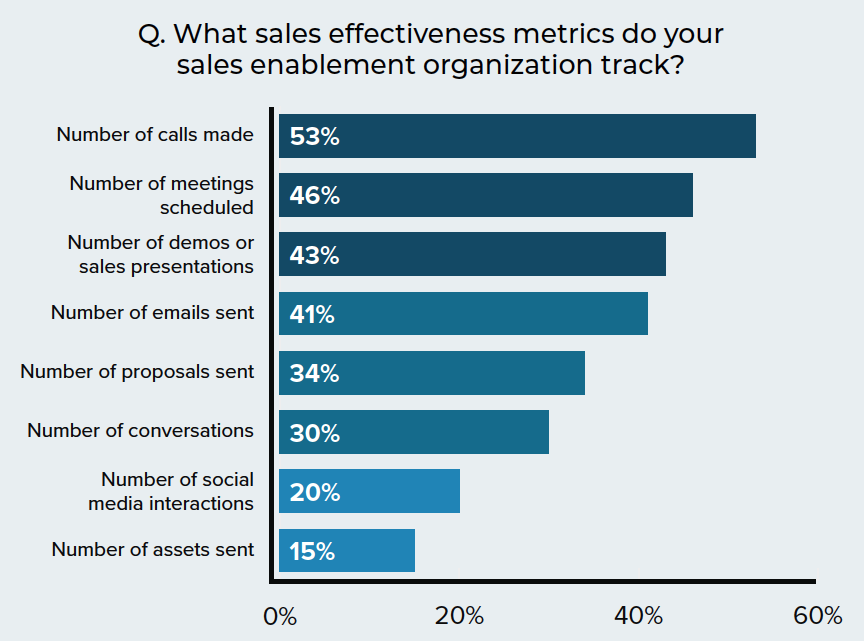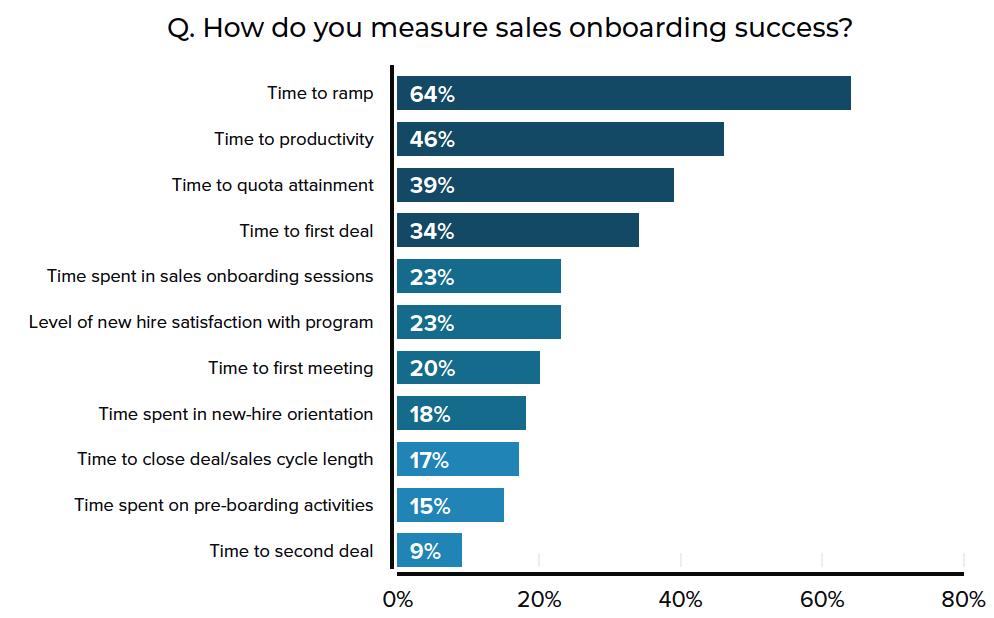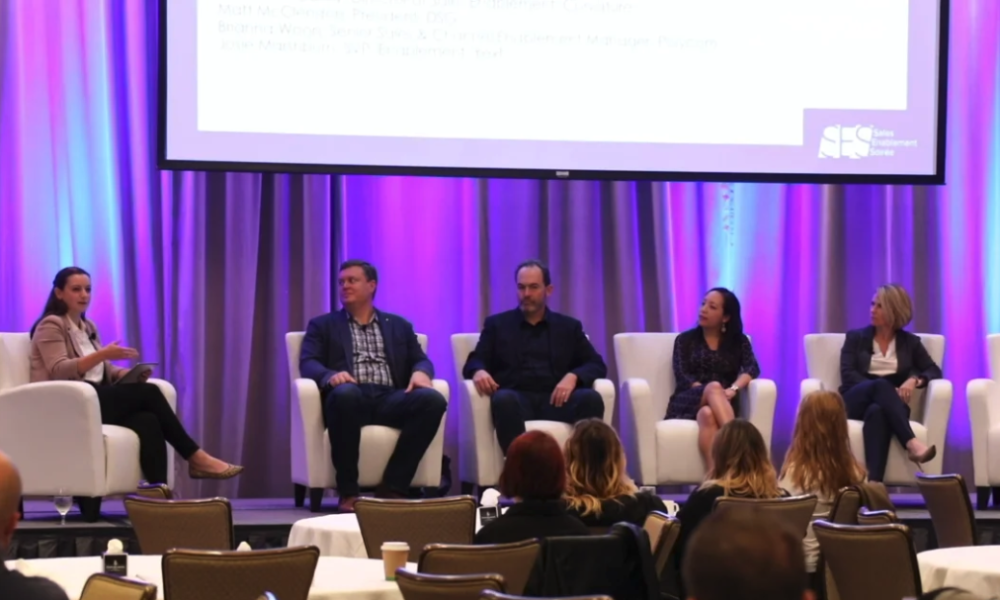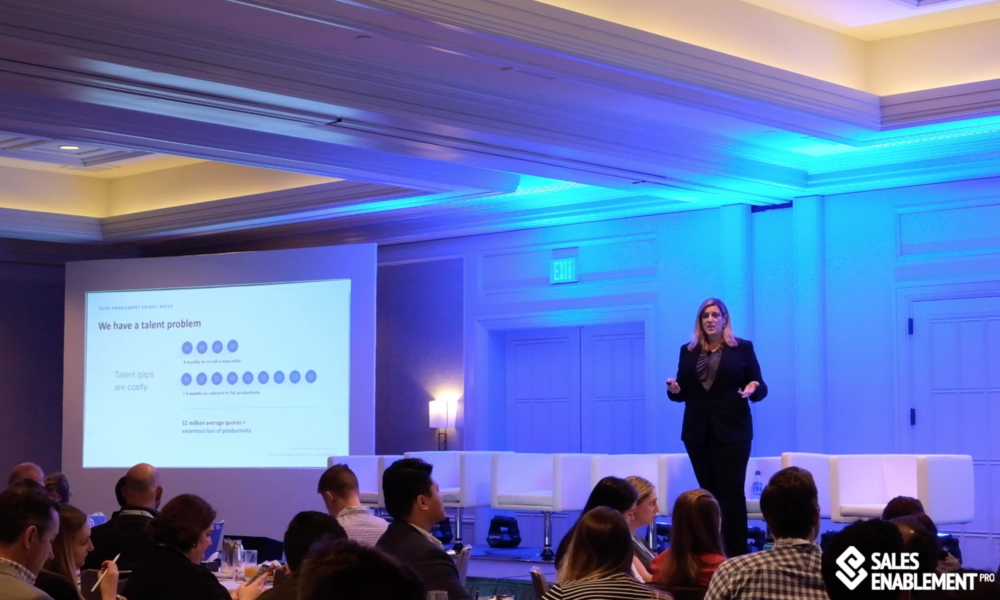Sales Enablement Analytics: Scaling Success with Rep Repeatability
3.1K Views | 8 Min Read
In sales enablement, practitioners are on a constant journey to answer one question: how do we make our sales reps more successful? Regardless of sales process, methodology, or company mission, every organization is on the hunt for the secret ingredients that top performers use to consistently win. In fact, this is a key part of sales enablement’s charter at many organizations – to identify the recipes for success and scale those across the entire sales organization.
Often organizations try to tackle this by simply pushing activity numbers to improve sales productivity and proficiency. For example, sales reps are often told that they need to make a certain number of dials or send x-amount of emails per day to be successful. This essentially communicates the message that quantity of activities alone will lead to success.
However, as the Sales Enablement Analytics 2019 report found, this is not a consistent predictor of success. Activity only matters if it leads to repeatable success. By prioritizing quality over quantity, close consistency, and behavioral patterns, sales enablement can more effectively scale repeatable rep success.
Quality Over Quantity
When it comes to measuring sales effectiveness, the metrics most commonly tracked by sales enablement are rooted in activity. The three most common metrics are:
- Number of calls made (53%)
- Number of meetings scheduled (46%)
- Number of demos or sales presentations (43%)

Many sales tools make activity numbers easy to track, which is one of the main reasons why it is a common focus for sales enablement. It is easier to measure activity than behavior. However, pushing activity alone has the potential to inadvertently encourage behavior that doesn’t breed success. For example, perhaps a sales rep is making the expected number of dials, but when they connect with someone on the phone, they are not asking the right questions to keep them engaged. On the other hand, a top performer might do a great job of establishing a connection with someone over email, and the number of emails sent can hide the factors that truly resulted in success. Therefore, sales enablement needs to look deeper into the quality rather than the quantity of activities.
“People can be so blinded by activity numbers,” said Erica LeBlanc, global sales enablement manager at Logi Analytics. “A rep may seem to be doing their job on paper, but when you dig deeper, they are not truly being effective with those activities.”
To do so, practitioners could look at the response rate compared to the number of emails sent, the percentage of content engaged with by buyers compared to the number of assets sent, or whether specific pieces of content accelerate certain types of opportunities through deal stages at a faster velocity. By analyzing the data in this way, sales enablement can gain insight into how effective reps truly are in engaging customers and closing deals.
Close Consistency
Similarly, it is important for sales enablement to understand the consistency with which reps are able to close deals. While 34% track “time to first deal” for newly hired sales reps, just 9% track “time to second deal”, a gap of 25 percentage points.

The trouble with only tracking “time to first deal” are all of the variables that might have impacted that one, first deal. For instance, deals are often passed down as a warm lead from others that have prospected or worked the account previously, or a new hire might get more assistance from their manager in closing that first deal while they are ramping. Therefore, it is not always indicative of a seller’s ability to consistently close deals and can instead be misleading.
By measuring “time to second deal” and beyond, sales enablement practitioners can better understand trends among reps as well as gaps in proficiency that may be impacting their ability to close deals.
“‘Time to first deal’ matters to me only if they sourced their own pipeline,” said Erez Haimowicz, director of global sales enablement at Tessian. “If they were given it, then I don’t look at it. Instead, I look at ‘time to second’ and third deal.”
In fact, the Sales Enablement Analytics 2019 report found that organizations that track “time to second deal” report win rates that are six points higher than those that do not. In order to more effectively identify gaps and provide the necessary support to improve seller proficiency, sales enablement needs to dig into the sellers’ ability to exhibit behaviors that lead to consistently closing deals.
Behavioral Patterns
One of the core values that sales enablement can bring to the business is to identify patterns of success and scale that through behavior change. In looking at the quality of activity and consistency of results, sales enablement should analyze the differences in behavior between low and high performers.
“We’re all in the business of pattern recognition,” said Doug Landis, growth partner at Emergence Capital. “Take your top performers and how do we rinse and repeat, rinse, repeat. And ideally, the impact of that will actually increase overall rep productivity.”
Spend time observing top performers to understand the behaviors that lead to success, as well as lower performers to determine if there are any common factors that prevent them from being successful. In doing so, explore questions such as:
- What does the “time to second deal” or even better “time to pipeline” look like?
- Are there certain sale stages where high performers accelerate deals through? Or alternatively where low performers seem to struggle the most?
- What is the average selling price and is discounting being done appropriately?
- What does customer satisfaction look like per rep and is there a correlation to the lifetime value of that customer?
- Is there a difference in performance between reps that have or have not received certain training/certifications?
Comparing the actions of sales reps in this way will help sales enablement practitioners identify behaviors and patterns that help or hinder deals. Armed with that information, sales enablement can design training, coaching, content, and messaging frameworks to encourage behaviors that are more likely to lead to success based on data.
“For most companies, that’s the heart of the growth engine: are your reps successful in being able to take whatever your message is, whatever your value proposition is, identify pain, and then ultimately, turn that into a customer,” said John Gilman, chief revenue officer at People.ai. “Unless you have kind of repeatable motion, it’s very difficult to scale a team. It’s very difficult to retain a team.”
When reps are able to achieve success in a repeatable fashion, companies are better positioned for predictably scalable growth.


















